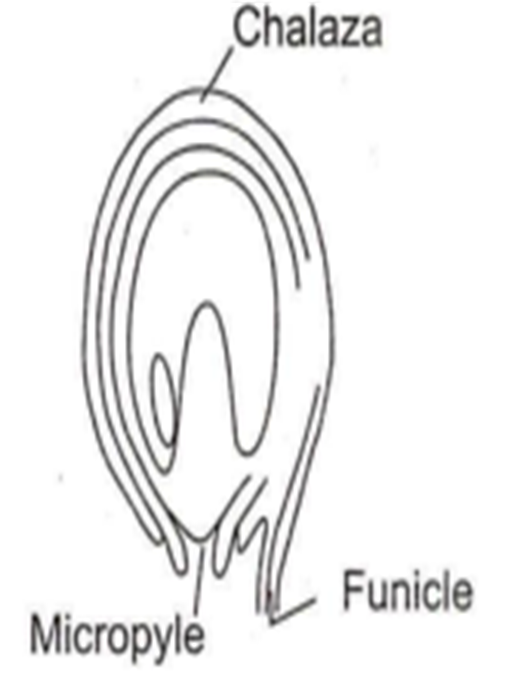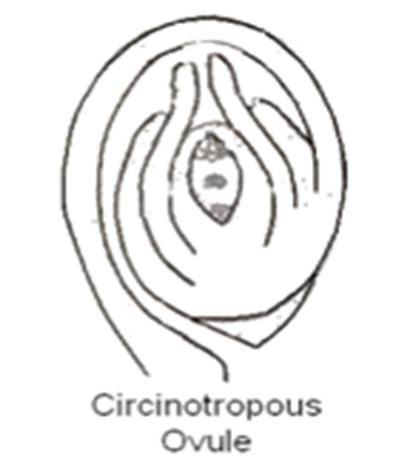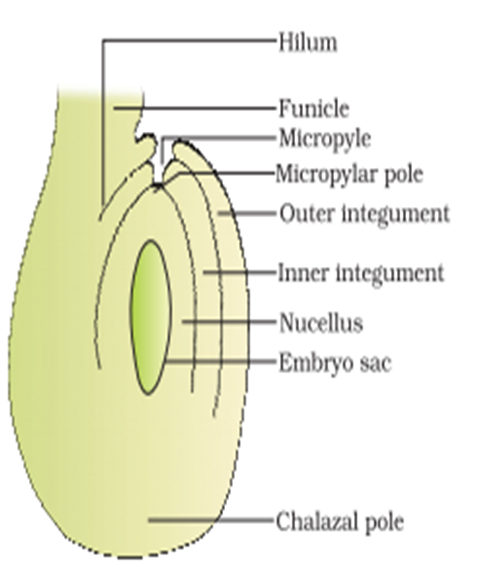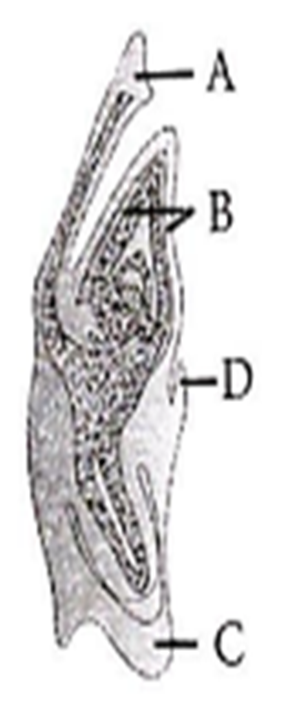 Multiple Choice Questions
Multiple Choice QuestionsWhich one of the following represents an ovule, where the embryo sac becomes horse-shoe shaped and the funiculus and micropyle are close to each other?
Circinotropous
Anatropous
Amphitropous
Atropous
C.
Amphitropous
In an amphitropous ovule, the embryo sac becomes horse- shoe shaped and the funiculus and micropyle are close to each other. It is found in Alismaceae, Butamaceae families.

Circinotropous ovule- The nucellus and the axis are in the same line in the beginning but due to rapid growth on one side, the ovule becomes anatropous.

Anatropous ovule is a completely inverted ovule turned back 180 on its stalk.

Among plants "pheromones" are secreted by the cells of the following plants for given function
all plants for growth and development
Yeast for facilitating mating
all fungi for sexual reproduction
Rhizopus for formation of zygospore
If the pollen tube enters the ovule through funiculus, the phenomenon is known as
porogamy
chalazogamy
mesogamy
heterogamy
Which of the following is the most resistant material in pollen grain
Sporopollenin
Intine
Exine
Certicle
For the formation of tetrasporic embryosac, how many megaspore mother cells are required?
1
2
3
4
Double fertilization means
fusion of nucleus of male gamete with the egg nucleus
fusion of two polar nuclei
fusion of sperm nucleus with secondary nucleus
fusion of one sperm nucleus with nucleus and fusion of other sperm nucleus with secondary nucleus
If there are 4 microspore mother cells in an anther, what will be the number of pollen grains?
4
8
12
16
After double fertilisation, a mature ovule has
I diploid and I haploid cell
1 diploid and I triploid cell
2 haploid and I triploid cell
1 haploid and I triploid cell
Identify the parts labelled A, B, C and D in the given figure and select the correct option.

A- Scutellum, B- Epiblast, C- Coleoptile, D- Coleorhiza
A- Scutellum, B- Coleorhiza, C- Coleoptile, D- Epiblast
A- Scutellum, B- Coleoptile, C- Coleorhiza, D- Epiblast
A- Epiblast, B- Coleoptile, C- Coleorhiza, D- Scutellum
